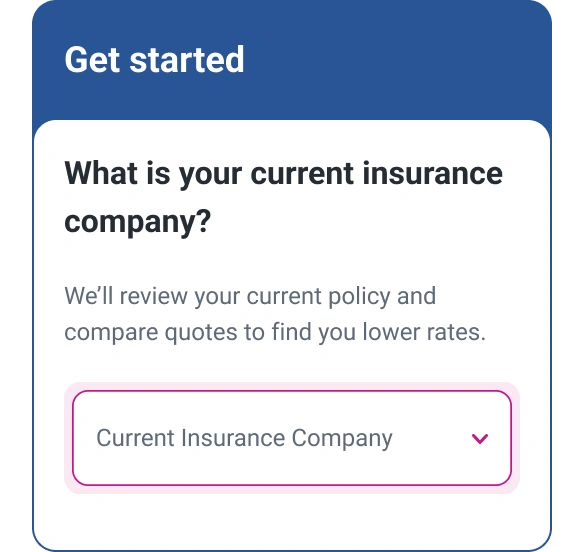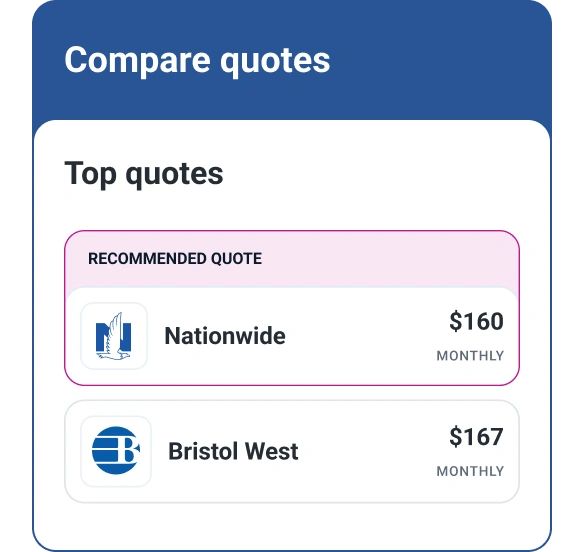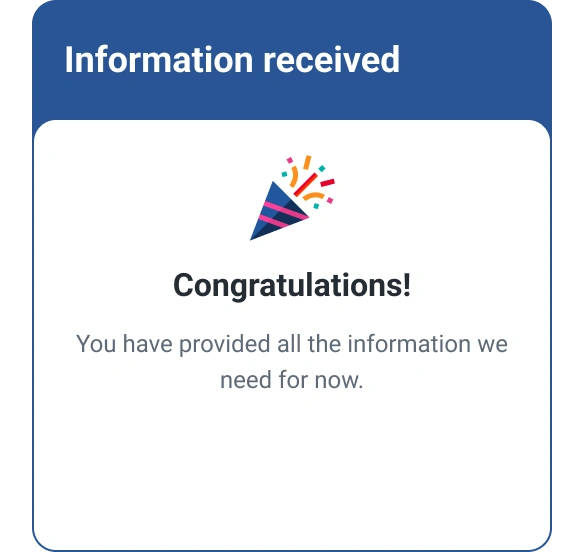How to Get Car Insurance in 5 Steps
Quick Answer
You can get car insurance by first gathering your personal and vehicle information, then comparing multiple quotes and coverage options can help you find the best option for your budget.

When shopping for car insurance, it's important to ensure you find a policy tailored to your individual needs. That means having accurate information on hand, knowing how much coverage you should have, comparing quotes and submitting an application.
Here's a step-by-step guide on how to get car insurance and to make sure you get the coverage you need at the best price possible.
1. Gather Personal and Vehicle Information
You'll need several pieces of information about yourself and anyone else in your household who needs coverage, along with the vehicles you want to include on the policy. Here's a summary of the information you'll need to get car insurance.
Personal Information
You'll need the following details for each driver you plan to list on the policy:
- Full name
- Date of birth
- Social Security number
- Driver's license number
- Gender
- Marital status
- Driving history
You'll also need to provide your address and your parking accommodations (such as in a garage or under a carport). You may also need to provide your phone number and email address.
Learn more: What Do You Need to Get Car Insurance?
Vehicle Information
For each vehicle you're listing on the policy, you'll need the following information:
- Make, model and year
- Vehicle identification number (VIN)
- Safety features
- Anti-theft features
- Expected number of miles driven annually
- Current mileage
- Ownership status
You may also need to provide other information, like if your car has any aftermarket modifications.
2. Review Coverage Requirements and Needs
Most states require a minimum amount of insurance coverage, and those requirements can vary by state. But while that's a good starting point, it's important to consider what you need to maintain a sufficient amount of protection.
Here are some of the most common types of car insurance coverage.
| Coverage Type | What Is Covered and Required |
|---|---|
| Liability insurance | Damage you cause to other people's property as well as injuries you are responsible for if you get into an accident. Most states require that you maintain some liability coverage. |
| Collision insurance | Damage you cause to your own vehicle when you are involved in an accident or collide with an object. It may be required if you've financed or leased your vehicle. |
| Comprehensive insurance | Damage your vehicle suffers unrelated to a collision. This includes theft, vandalism, natural disasters, windshield damage and damage caused by animals. Comprehensive insurance is often required by lenders and leasing companies. |
| Uninsured and underinsured motorist coverage | Certain expenses you incur if you get into an accident caused by an uninsured or underinsured driver. It can help you cover medical bills and repair costs when the other party can't pay. While it's required in some states, it's optional in others. |
| Medical payments coverage | Medical bills and treatment for your passengers and yourself when you're involved in an accident, regardless of who was at fault. It can fill the gaps or limits in other types of coverage and is generally optional. |
| Personal injury protection coverage | Medical bills, lost wages, child care expenses, funeral costs and other expenses, regardless of who caused the accident. It may be required in a no-fault state. |
Learn more: What Is Full Coverage Car Insurance?
3. Compare Quotes From Multiple Insurers
Once you have a good idea of how much coverage you need, request quotes from multiple insurance companies so you can compare pricing, coverage types and other features. You can usually obtain a quote from an insurer online or by speaking to an agent. However, doing this with each one individually can be time-consuming.
Alternatively, you can contact an independent agent or broker who works with multiple providers and can offer quotes without requiring you to fill out multiple forms. For example, Experian can help you compare auto insurance quotes from top insurers, making it easier to find the best deal.
As you compare quotes, it's also a good idea to look at the discounts each insurer offers so you can maximize your savings. Some common discounts include:
- Safety device discount
- Anti-theft discount
- Defensive driving discount
- Pay-in-full discount
- Multi-vehicle discount
- Multi-policy discount
- Good student discount
- Student away at school discount
- Clean record discount
4. Submit an Application
Once you choose an insurance company, continue with them to fill out an application using the information you gathered in the first step.
After submitting your details, the insurance company will evaluate your information, along with your driving record and credit history, to give you a final quote. At this point, you can adjust coverages and deductibles to find the right balance between your budget and your need for financial protection.
Overall, the application process can be completed in just a few minutes, especially if the insurance company already has your information from the quote process.
5. Pay Your Premium
After you evaluate your offer from the insurance provider, you can move forward with buying the policy by paying your first premium.
It's typically best to pay the full policy premium upfront, but some insurance companies may allow you to pay monthly or in other increments. These payment options may be more convenient, but they may cost you a little more in the long run.
Depending on the insurance company, payment options may include:
- Credit card
- Debit card
- Bank transfer (e-check)
- Personal check
- Money order
- PayPal
- Cash
Learn more: How to Lower Your Car Insurance
Frequently Asked Questions
Improve Your Credit Score to Save on Car Insurance
Although not allowed in all states, one factor that insurance companies may take into consideration where it's permitted is your credit-based insurance score. If your score is low, it could result in a higher insurance premium. While credit scores and insurance scores are not the same thing, both use your credit report when calculating a score—which means a good score could help you save.
To evaluate your credit score, register with Experian to get free access to your Experian credit report and FICO® ScoreΘ. Then, take steps to improve your credit based on the information you find.
One way you could increase your FICO® Score instantly is by using Experian Boost®ø. This free feature rewards you for past on-time payments for bills not typically included on a credit report, such as your eligible phone, utilities, rent, insurance and streaming services. When added to your Experian credit report, these payments may instantly increase your FICO® Score, powered by Experian data.
Don’t overpay for auto insurance
If you’re looking for ways to cut back on monthly costs, it could be a good idea to see if you can save on your auto insurance.
Find savingsAbout the author
Ben Luthi has worked in financial planning, banking and auto finance, and writes about all aspects of money. His work has appeared in Time, Success, USA Today, Credit Karma, NerdWallet, Wirecutter and more.
Read more from Ben

